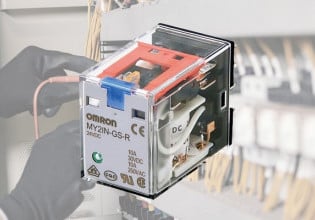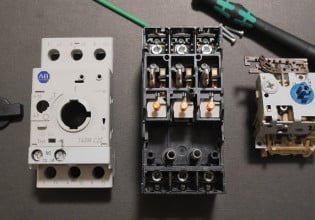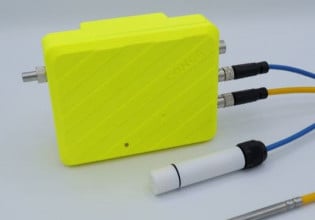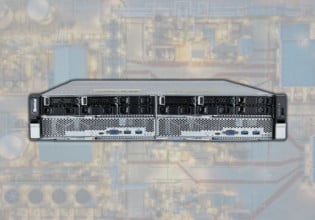Key Points to Help Manage Maintenance for Industrial Energy Systems
Industrial energy systems are imperative for continuous manufacturing production and should be maintained to ensure efficiency. Learn how to maintain these systems and implement automation devices.
Industrial energy systems consist of equipment for producing and supplying power and utilities for energy recovery and automation devices. These systems work in unison to facilitate floor production needs with electricity, coal, steam, or gas as the energy sources. Industrial energy systems are critical, cost-intensive utilities that require proper operation and timely maintenance to enhance efficiency and extend useful lives. Optimizing the performance of industrial energy systems translates to better revenues as it guarantees lower energy consumption.
Managing maintenance work for industrial energy systems can be a tall order if a company or facility lacks an appropriate maintenance strategy. Combining proactive maintenance interventions with technological solutions improves the quality and effectiveness of maintenance programs designed for industrial energy systems. This article reviews best practices for managing maintenance work to reduce equipment failures and breakdowns. It highlights the benefits of technology in streamlining maintenance on critical energy components like boilers, ovens, furnaces, heaters, and turbines.

Figure 1. An industrial HVAC system. Image used courtesy of Pixabay
1. Optimize Routine Maintenance Schedules
The first step toward managing maintenance work for industrial energy systems is paying close attention to recommendations provided by the equipment manufacturer. Equipment failure occurs due to aging parts, using defective spare parts, or deferring maintenance work. Adhering to routine maintenance schedules enables maintenance technicians to identify early signs of failures. Companies can extend the useful lives of energy systems by appropriately scheduling routine inspections and performing complete preventive maintenance work.
Industrial Boilers
Boilers are appliances that burn fuels to produce steam or hot water and circulate it through pipes for process control or heating purposes. Boilers are classified as electric boilers, fire-tube boilers, or water-tube boilers. Major maintenance points for industrial boilers include:
- Fuel systems — Frequently check the fuel distribution systems for dirt, blockages, or impurities. Dirt and impurities reduce the overall efficiency of burners. Consider cleaning the burners at regular intervals. Some boilers have automatic fuel cut-off systems that activate when water levels drop. Inspect and clean cut-off systems once every year.
- Safety valves — Safety valves on boilers relieve excess pressure. These valves may fail due to internal corrosion or weakening seals. Inspection of safety valves is done semi-annually or annually, depending on the working conditions of the boiler.
- Gauges — Boilers have multiple gauges for monitoring steam pressure, water levels, temperature, and other process parameters. Check and clean the glass daily. Calibrate all process gauges once every year.
- Heat transfer surfaces — The heat transfer surface is an interface between the steam generator and the combustion chamber. A build-up of soot reduces the heat transfer efficiency. Clean the heat transfer surfaces as recommended by the manufacturer.
- Frequently inspect the water treatment systems for leakages, impurities, sediment build-up, or corrosion.
- Continuously analyze combustion rates, air-fuel ratios, and correct deviations. Install computer-based distribution control systems for accurate data collection and correction.
- Perform annual thermography tests to evaluate thickness and efficiency of insulations.
- Conduct semi-annual inspection of welds on piping systems, deaerators, and drums.

Figure 2. An industrial heater. Image used courtesy of Pixabay
Furnaces
Industrial furnaces heat air using oil, gas, or electricity. They distribute the warm air through ducts and supply it to internal spaces through registers. Some preventive maintenance actions include:
- Filters — Clean filters frequently. It could be monthly or quarterly, depending on how clean the working environment is. Replace old or broken filters.
- Combustion systems — Use visual inspection or non-destructive testing tools to check the combustion chamber for cracks. Check for leaks in connections between the furnace and ducts. Regularly clean the burner.
- Blowers and fans — Regularly lubricate the blower motor. Check the bearings for any signs of wear.
- Duct systems — Inspect the ducts for leakages and seal all leaking points.
- Valves — Install the correct type of regulators and regularly inspect valves for leakages.
- Electric cabling — Ensure all electrical cables are properly insulated. Confirm if the spark plugs are well-grounded. Calibrate spark plugs to maintain the appropriate ignition gap.
Ovens
- Blowers — Check the blower motor to confirm its working conditions semi-annually. Regularly lubricate the bearings to enhance efficiency. Clean the blower element.
- Heating elements — Continuously measure the resistance of heating elements to identify burnt-out heating elements. Repair or replace defective heating elements to improve the efficiency of the oven.
- Thermocouples — Thermocouples monitor the temperature conditions of the ovens. It is vital to keep them in good working conditions. Regularly calibrate the thermocouples and inspect cabling for defects that can cause short circuits or faulty readings.
- Seals and gaskets — These components prevent heat leakages from the oven. Temperature rise indicates faulty or broken seals. Inspect seals and gaskets once yearly. Replace gaskets with early signs of failure.
Turbines
The reliability and performance of turbines depend on the quality of steam. Steam turbines consist of several interdependent components that require frequent preventive maintenance.
- Turbine blades — Inspect turbine blades for signs of wear, cracks, or deformations. Confirm the structural reliability of blade connectors. It is advisable to conduct turbine blade inspections annually.
- Rotors — Conduct regular inspection of rotor bearings. Check the alignment of rotors.
- Lubrication systems — Frequently verify the amount of lubricant in the system. Check the lubrication system for signs of leakages. Clean the lubrication filters and drain dirty oil.
- Control valves — Inspect control valves for corrosion. Replace old valves with automatic steam control valves.
- Steam lines and piping systems — Inspect all steam lines and connection joints for leakages. Perform non-destructive testing to identify points of structural weakness due to corrosion or sediment accumulation.

Figure 3. An industrial steam turbine.
2. Implement Technological Solutions
Modern technology continues to transform maintenance management for industrial energy systems. Technicians need to perform maintenance on regular schedules with a requirement to attend to all emergency breakdowns. Aside from correcting defects, maintenance professionals need to keep detailed maintenance logs. The more the number of independent assets, the more the quantity of maintenance work.
Computerized Maintenance Management Systems (CMMS) are solutions that enable maintenance teams to streamline workflows, improve collaboration, enhance data management, and standardize operations. Companies store informational manuals, standard checklists, lockout tagout (LOTO) procedures, and safety information on CMMS platforms. Authorized technicians can access this information remotely on mobile devices and utilize it to execute accurate maintenance interventions. CMMS programs work in unison with condition-monitoring sensors to collect and analyze real-time operating conditions of every piece of equipment. It not only reduces the time required to troubleshoot failures; it improves accuracy when performing root cause and failure mode analysis.
Modern CMMS programs generate alerts whenever maintenance is due. This capability ensures that preventive maintenance activities are dispensed in good time. Supervisors utilize these programs to allocate work and monitor the progress of assigned duties. Since industrial energy consumes plenty of spare parts, companies use CMMS platforms to harmonize their inventories.
Industrial energy systems are fitted with sensors interconnected through the internet of things (IoT). Companies utilize periodic equipment maintenance and operating data to develop algorithms for establishing predictive maintenance programs.
3. Streamline Spare Parts and Tool Inventories
The maintenance of industrial energy systems is a continuous process meant to supplement productivity and enhance facility safety. When conducting maintenance, technicians measure mean time to repair (MTTR) and mean time between failures (MTBF). The availability of the workforce, tools, and spare parts affect these metrics. A longer MTTR and a shorter MTBF translate to extended production downtime.
To improve the quality of maintenance programs, companies may want to streamline maintenance inventories. Lean inventory management ensures that tools and spare parts are available whenever required. At the same time, it ensures that the company does not incur additional charges to store vital spares. Over time, companies upgrade their facilities with modern technology. Overstocking for supplies could render some replacement parts obsolete, leading to further financial losses.
Companies may want to leverage equipment maintenance data contained in CMMS platforms for industrial energy systems to categorize and prioritize maintenance consumables based on usage frequency. Stocking sufficient original equipment manufacturer (OEM) parts enable companies to perform timely maintenance of industrial energy systems without lowering the performance, integrity of processes, and efficiency of individual components.
4. Train Employees
Maintenance of industrial energy systems changes with the introduction of digital tools and platforms. Modern energy systems have additional sensors, monitoring systems, data analysis utilities, and information technology ports. Operators and maintenance professionals should keep abreast of these advancements. They require digital skills to collect, analyze, and draw reasonable conclusions from all data collected by sensors mounted on industrial energy systems.
When implementing total productive maintenance, operators become part of maintenance teams. They interact with energy systems frequently and can notice mishaps from the way individual equipment behaves. When dispensing staff training, it is crucial to acquaint plant operators with basic maintenance skills like lubrication, cleaning, data logging, and sequential shutdown in case of emergency failure.
Maintenance professionals require all-around maintenance skills. The skilled labor shortage is making it compulsory for companies to develop continuous skill development programs. Technicians are taken through on-the-job training to sharpen their technical skills and enable them to undertake planned and emergency maintenance on diverse energy systems. That way, small teams can quickly perform high-quality maintenance tasks, minimizing the need for rework, which can be costly. Training programs provide avenues for companies to update staff on new compliance rules and regulations, modification of standard procedures, and additional safety requirements.
Summing Up
Managing the maintenance of industrial energy systems can be a tall order when relying on manual asset tracking and monitoring methods. Although industrial energy systems bear several similarities, maintenance schedules and interventions required for every piece of equipment vary. Companies should consider implementing technological solutions to streamline maintenance workflows, improve maintenance quality, and control maintenance budgets. Developing facility-specific training programs and seeking innovative ways to enhance inventory management may be beneficial.






